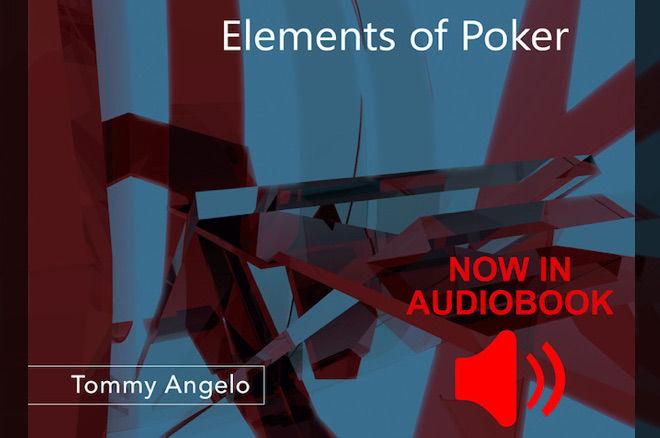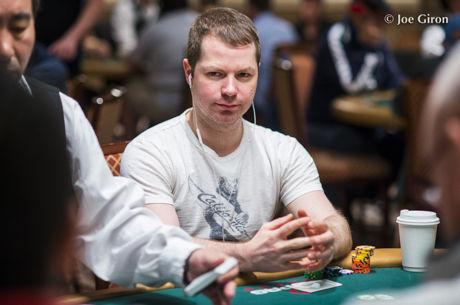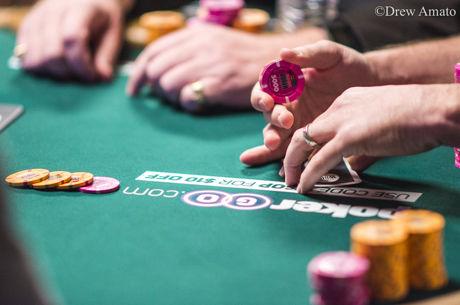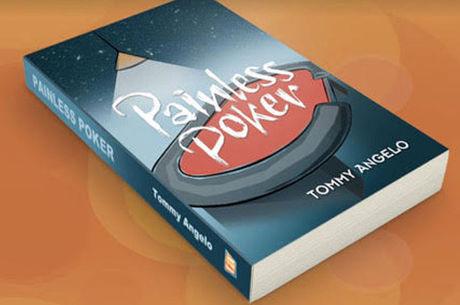Tommy Angelo Presents Element No. 22: Tilt

Editor's note: Coinciding with the release of the audio-book version of Tommy Angelo's classic Elements of Poker, the poker author, coach and player shares one of his most illuminating "elements" �� the one defining tilt (and its many kinds).
"To win at poker, you have to be very good at losing." ~me
During the first few years of my poker-playing career, I played almost entirely in home games that were almost entirely loose and reckless. All I had to do to win was play tight, which I had learned how to do. The trouble was, I had also learned how to tilt.
I was a great tilter. I knew all the different kinds. I could do steaming tilt, simmering tilt, too loose tilt, too tight tilt, too aggressive tilt, too passive tilt, playing too high tilt, playing too long tilt, playing too tired tilt, entitlement tilt, annoyed tilt, injustice tilt, frustration tilt, sloppy tilt, revenge tilt, underfunded tilt, overfunded tilt, shame tilt, distracted tilt, scared tilt, envy tilt, this-is-the-worst-pizza-I've-ever-had tilt, I-just-got-showed-a-bluff tilt, and of course, the classics: I-gotta-get-even tilt, and I-only-have-so-much-time-to-lose-this-money tilt, also known as demolition tilt.
I'd tilt, and I'd look back on my tiltings, and I started seeing cycles, and then cycles within the cycles, and before long, I started to see my entire poker future as a ceaseless fluctuation between tight and tilt. I figured if I ever went broke at poker, it wouldn't be because my best wasn't good enough to keep me afloat. It'd be because my worst was bad enough to sink me.
A big day in my career was the day I realized that tomorrow I would still be a tilter. That there would be no quick fix. That any headway I made would be gradual. I realized that if I could somehow put progressively longer periods of time between my tiltings, and if I could somehow have them be progressively not quite as bad as the last time, then I'd have a chance to get some wind under my wings, and when I did, I'd soar indefinitely. Less often, less severe. Less often, less severe. That's what I kept telling myself.
It is now fifteen years and thirty thousand hours of poker later. In that time I have gathered myself, and my thoughts��
On Tilt
Tilt has many causes and kinds, but it has only one effect. It makes us play bad. It makes us do things we wouldn't do if we were at our very best. And that's how I want to define it, exactly like that. Tilt is any deviation from your A-game and your A-mindset, however slight or fleeting.
There are two reasons to define tilt in this way. One is standardization. All A-games are identical. Anyone who is playing his A-game is making the best decisions he knows how, and his mind is as right as it ever is. That's what A-game is. It's our best. And we all have it. So by defining tilt from the top down, we can draw a line for any player that cleanly divides his tilt from his non-tilt.
The other reason is that we aren't just playing with words here. We are using them as shovels to dig for gold. And by using the word tilt to focus on our best, instead of our worst, we hit a lode: Tilt is non A-game. Tilt is anything less than your utmost. Tilt is suboptimalness. Defining tilt in this way, everyone tilts. It's just a matter of how often, how long, and how bad.
And so we arrive at the three dimensions of tilt: frequency, duration, and depth. How often do you deviate from your A-game? How long does it last? And how far below your A-game do you go? Revisit those questions.
Tilt is all about you. If you think you should have taken the day off, or if you think you should have played at different stakes, or if you think you made a bad raise, then you tilted. Only you know when you knew better.

World-class coach and author, Tommy Angelo is considered a modern master of poker's mental game, and has helped pros and rec players alike achieve less tilt and more focus. Called "the seminal poker text of the 21st century" by The London Times, Angelo's Elements of Poker has revolutionized how serious players approach the game. His latest book, Painless Poker, already a bestseller, can be found on Amazon.com. Connect with Tommy on Twitter @TheTommyAngelo, and visit his website: tommyangelo.com.









